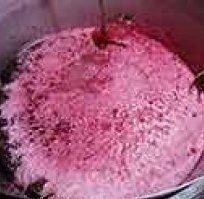Yeast's DNA decoded

In a world first, scientists at The Australian Wine Research Institute have cracked the genetic code of a wine yeast. The breakthrough, claim the Australians, paves the way for development of improved wine yeast – and presumably more predictable ‘wine outcomes’, as some would put it. (See Yeast – a cultural matter.)
“Availability of improved wine yeast will put winemakers in a stronger position to control fermentation and develop wines with the right quality, character and flavour,” was AWRI Senior Research Scientist Dr Anthony Borneman’s comment. “We’ve laid important groundwork for further sequencing and comparative analysis of other wine yeast strains.”
“We have made a significant breakthrough in understanding wine yeast,” said Dr Paul Chambers, Research Manager of AWRI’s Biosciences team. “We will soon know where to look to find out why some wine yeasts can be troublesome and we will be better placed to improve and tailor them for production of particular wines for target markets.”
The first yeast strain to be sequenced (not a wine yeast) took 10 years, involving 70 laboratories for ten years and costing millions of dollars. Current technology, available through the Australian Genome Research Facility, meant that the AWRI’s sequencing project took just six months.
“Today, we are unlocking the potential of yeast for winemakers, using genes to our advantage, without resorting to genetic engineering,” said AWRI Managing Director, Professor Sakkie Pretorius. “By understanding the biology of yeast and the chemistry of wine we can use science to give the Australian wine sector an opportunity to innovate and maximise its market potential.”
The full reference for this work is: Borneman, A R, A Forgan, P J Chambers & I S Pretorius. 2008. Comparative genome analysis of a Saccharomyces cerevisiae wine strain. FEMS Yeast Research 8:1185-1195
Become a member to view this article and thousands more!
- 15,396 featured articles
- 274,621 wine reviews
- Maps from The World Atlas of Wine, 8th edition (RRP £50)
- The Oxford Companion to Wine, 5th edition (RRP £50)
- Members’ forum
- 15,396 featured articles
- 274,621 wine reviews
- Maps from The World Atlas of Wine, 8th edition (RRP £50)
- The Oxford Companion to Wine, 5th edition (RRP £50)
- Members’ forum
- Commercial use of our Tasting Notes
